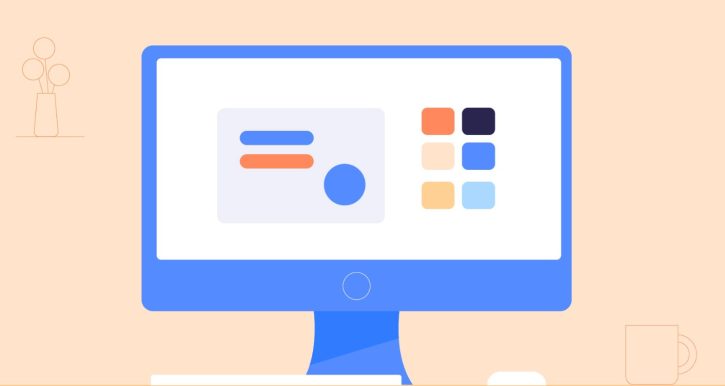In some cases, educational scientists have put e-learning into groups based on the technology used to learn, while in other cases, they have focused on things like synchrony and the content being learned.
In this article, I have shared my knowledge of “Types of E-Learning”
There are 10 main types of e-learning, which will be talked about in this article.
Some educational scientists use more simple ways to group the different kinds of e-learning.
They say that there are only two ways to learn online: using a computer or the Internet.
Since the terms “e-learning” and “online learning” are often used interchangeably, this could be a more accurate way to group them.
Even though CML and CAL don’t have to be done online, they are still called “e-learning” because they are done online.
These are the 10 types of e-learning in 2024:
1. Computer Assisted Instruction (CAI)
Computer-assisted learning (CAI), or computer-assisted learning (CAL), is a type of e-learning that uses computers in a traditional classroom setting.
Patrick Suppes, a computer science professor at Stanford University in 1966, might have used this interactive program to teach his students.
Computer-assisted training uses text, pictures, sounds, and videos, among other things, to help students remember what they have learned.
CAI helps students become active rather than passive learners by giving them tools like quizzes that help with teaching and testing.
Computer-assisted learning is becoming more common in online and traditional schools, and this trend will likely continue.
2. Computer Managed Learning (CML)
Computers are used to manage and assess learning processes in computer-managed learning (CML).
Databases of information are used in computer-aided learning systems.
Additionally, these databases have several rating elements that allow the system to be adjusted to the interests of each student.
Real-time communication between students and computers allows teachers to assess whether or not a student has met his or her learning objectives.
If the student is still dissatisfied with their progress toward their goals, the procedures might be repeated.
3. Synchronous Online Learning
Sophisticated Synchronous online learning enables worldwide participation by students at the same time.
Asynchronous video and text discussions over the Internet A typical feature of many online courses is synchronous communication between students and teachers.
This type of community-based learning is now available because of technological improvements.
True synchronous e-learning was practically impossible to create before the 1960s arrival of computer networks.
Many of the main downsides of online learning, such as social isolation and a lack of meaningful interactions between teachers and students, can be alleviated with synchronous e-learning.
An increasingly popular and rapidly expanding method of online education is synchronous e-learning (also known as real-time learning).
4. Asynchronous Online Learning
Asynchronous online learning, as the name suggests, occurs when students work together in distinct groups at different times and places.
Because they provide more freedom, asynchronous e-learning systems are frequently considered more student-centered than their synchronous equivalents.
As a result, students who are pressed for time prefer asynchronous e-learning since it gives them the flexibility to learn at their speed.
Students are not obligated to learn at regular intervals with their peers and can design their learning timetables as they see fit.
Before the PLATO system, e-learning was considered asynchronous because of the lack of computer networking alternatives.
Choosing between synchronous and asynchronous e-learning has gotten more complex due to the widespread availability of computers and the Internet.
5. Adaptive E-Learning
Adaptive e-learning allows instructors to customize and re-design their course contents for each student.
Personalizing education is now easier than ever before, taking into account a wide range of characteristics, such as student performance, goals, abilities and skills, and personality traits.
As a result, we have reached a point where laboratory-based adaptive instructional strategies can be used to sequence student data numerically.
This might usher in a new era of educational research if done correctly.
The importance and effectiveness of this form of e-learning are sometimes overlooked since it is more difficult to organize and implement than traditional teaching approaches.
6. Fixed E-Learning
When it comes to Fixed e-learning, you may have heard of the term before.
It means that no matter how many students participate, they will all have access to the same content, which is why the term “fixed” is used.
The professors get to pick the materials, and students have no say in what they learn.
While this type of learning has been commonplace in traditional classrooms for millennia, it’s not ideal for e-learning applications.
Students’ inputs are valuable because fixed e-learning doesn’t take advantage of this information.
The learning outcomes of all students are improved when data from each student is analyzed and material changes are made as a result of this analysis.
7. Linear E-Learning
The term “linear communication” refers to the fact that information always travels from one person to another.
Because there is no two-way communication between teachers and students in online learning, this is especially true.
This type of e-learning is becoming less relevant over time, despite its place in education.
Linear e-learning is defined by the fact that it provides students with instructional information via television and radio.
8. Interactive Online Learning
E-learning is a two-way communication channel between the sender and the receiver when it employs interactive elements.
Educators and students can make adjustments to their methods of instruction and learning in response to the feedback they receive.
Interactivity in online learning has grown in popularity as a result of this.
9. Individual Online Learning
Individual learning refers to how many students are actively involved in achieving the learning objectives rather than the content’s student-centeredness.
Ordinary schools have employed this method of teaching for a long time.
The only way for students to learn on their own is for them to gather their resources and complete their own learning goals.
Students are encouraged to work on their own and without the help of their peers, which does not promote the development of communication and teamwork skills in children.
It’s time to get rid of outdated communication skills and replace them with new ones.
10. Collaborative Online Learning
In a new form of e-learning called Collaborative e-learning, a group of students works together to accomplish their learning goals.
Cooperative learning is essential to students’ success in achieving their educational goals.
When students form effective groups, they must take into account the strengths and weaknesses of their peers.
This has a positive effect on the children’s communication and teamwork skills.
Knowledge can only be created in a group of people who can interact and learn from one another, so the idea of collaborative e-learning was born.
Even though this style of learning is more common in traditional classrooms than in online courses, it is a legitimate form of e-learning that, when done correctly, can be quite effective.
FAQs
How does Asynchronous Online Learning work?
Asynchronous Online Learning allows students to learn at their own pace and schedule, without the need for real-time interaction with peers or instructors.
What does Fixed E-Learning mean?
Fixed E-Learning provides the same content to all students, without any customization or input from the students.
How does Interactive Online Learning work?
Interactive Online Learning involves two-way communication where both educators and students can give and receive feedback, enhancing the learning experience.
What is Collaborative Online Learning?
Collaborative Online Learning involves students working together in groups to achieve common learning objectives, fostering communication and teamwork skills.
Quick Links:




